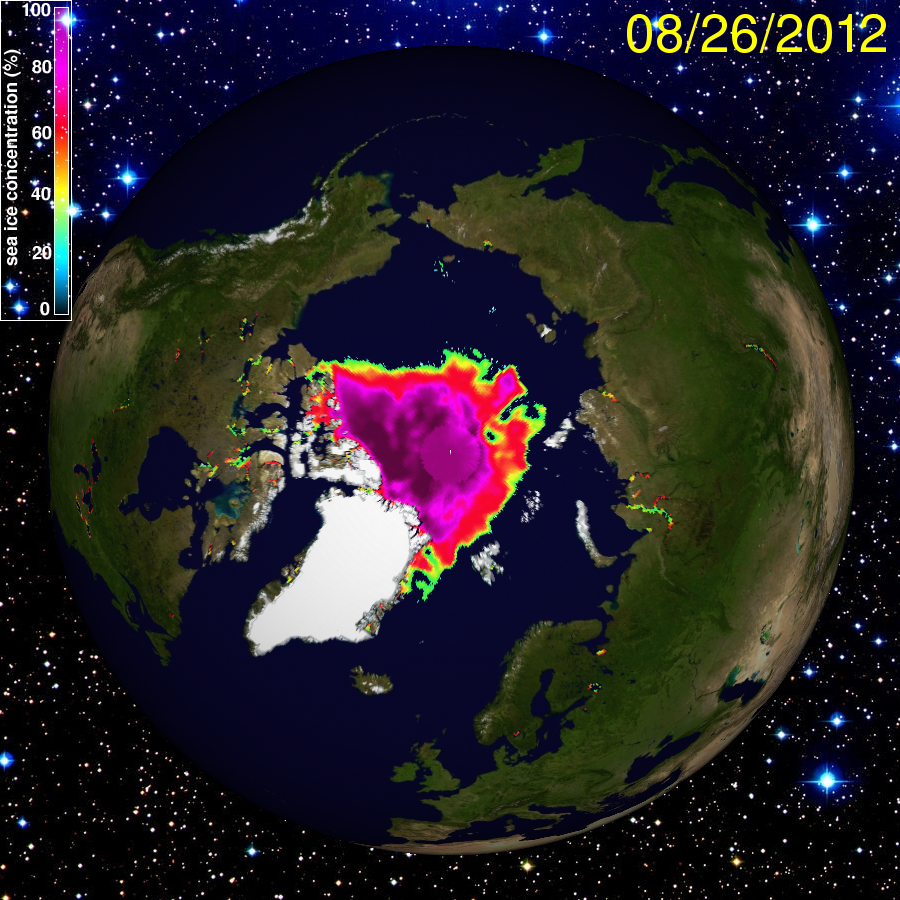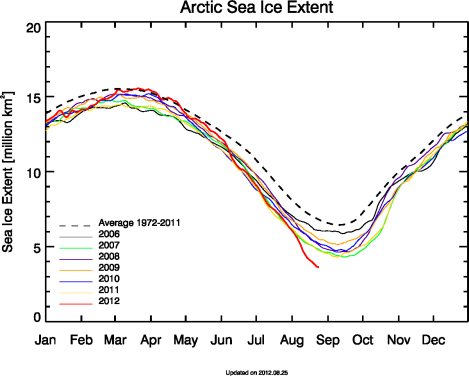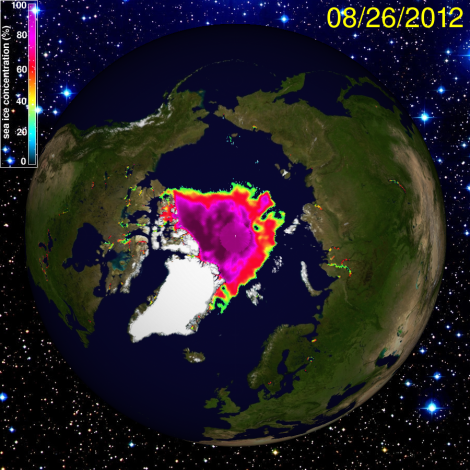As predicted, the extent of sea ice in the Arctic is now at a record low.
Here’s what that ice cover looks like from space, by thickness.
Note that ice cover generally reaches its nadir sometime in the middle of September — and that we are well below the normal level for the year. It’s very likely that the minimum ice extent for 2012 will be far below the previous record in 2007.
The record probably won’t last long, though. At some point in the near future, we’ll see less ice than this, and then less still, until we reach a minimum of zero ice coverage in the Arctic. And then the records set will be for how early in the year complete melt occurs.
I’m just going to go ahead and prepare all of those articles now. June 19, 2023: Earliest arrival of ice-free Arctic in history. I’ll start by including a statement from the president, making sure to include the by-then mandatory descriptor of which oil companies sponsored his candidacy.





